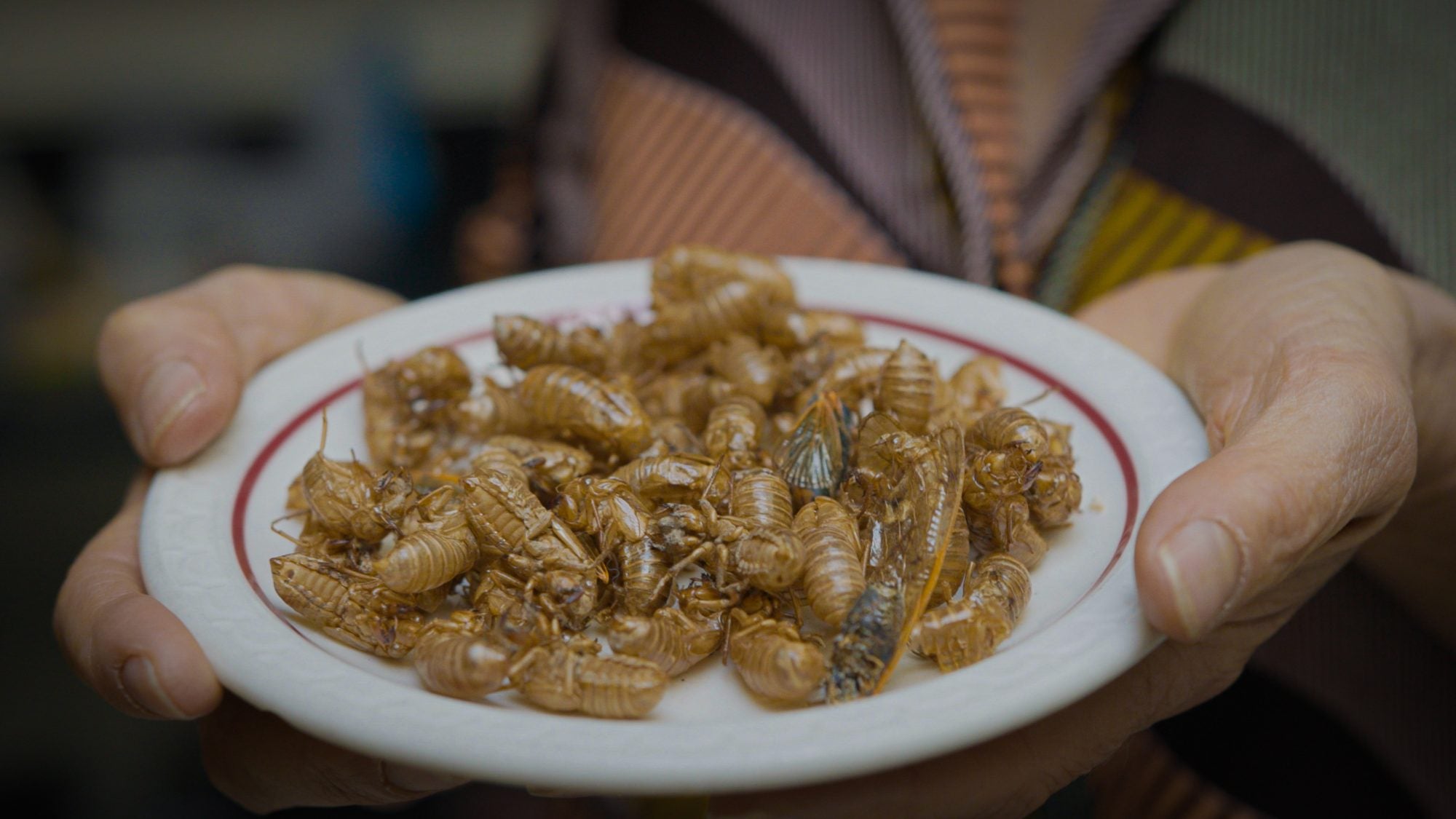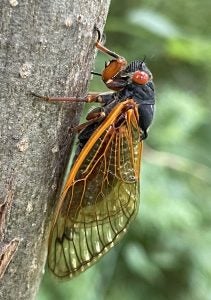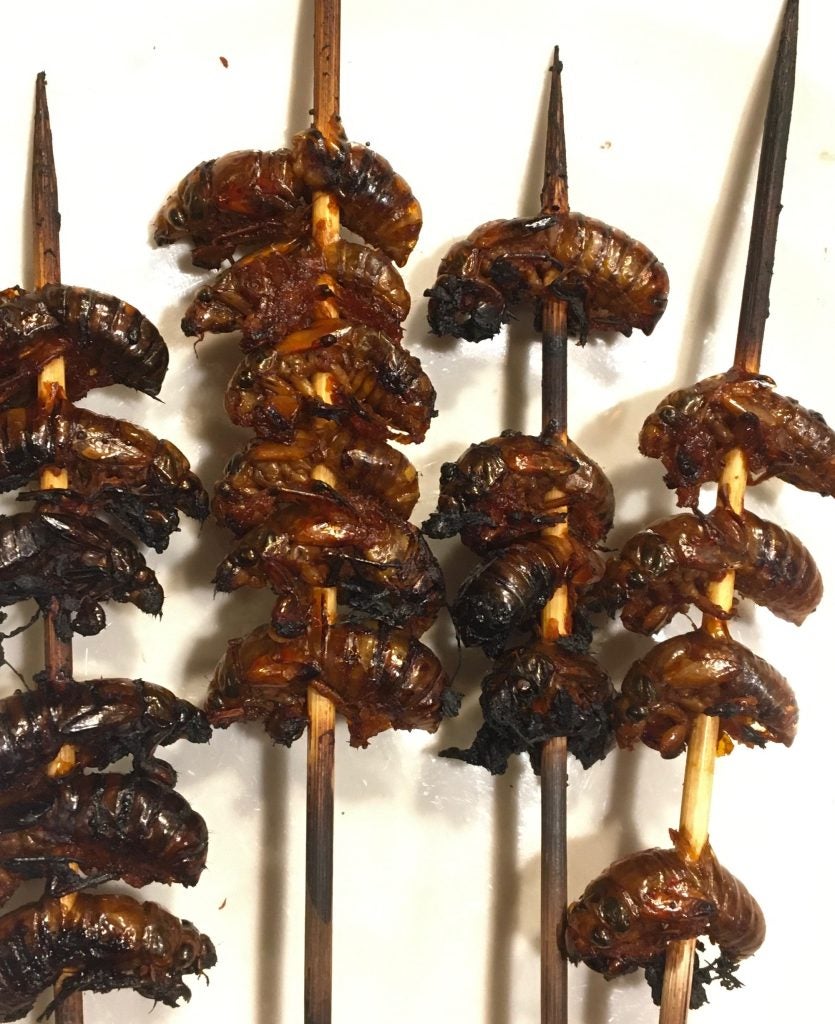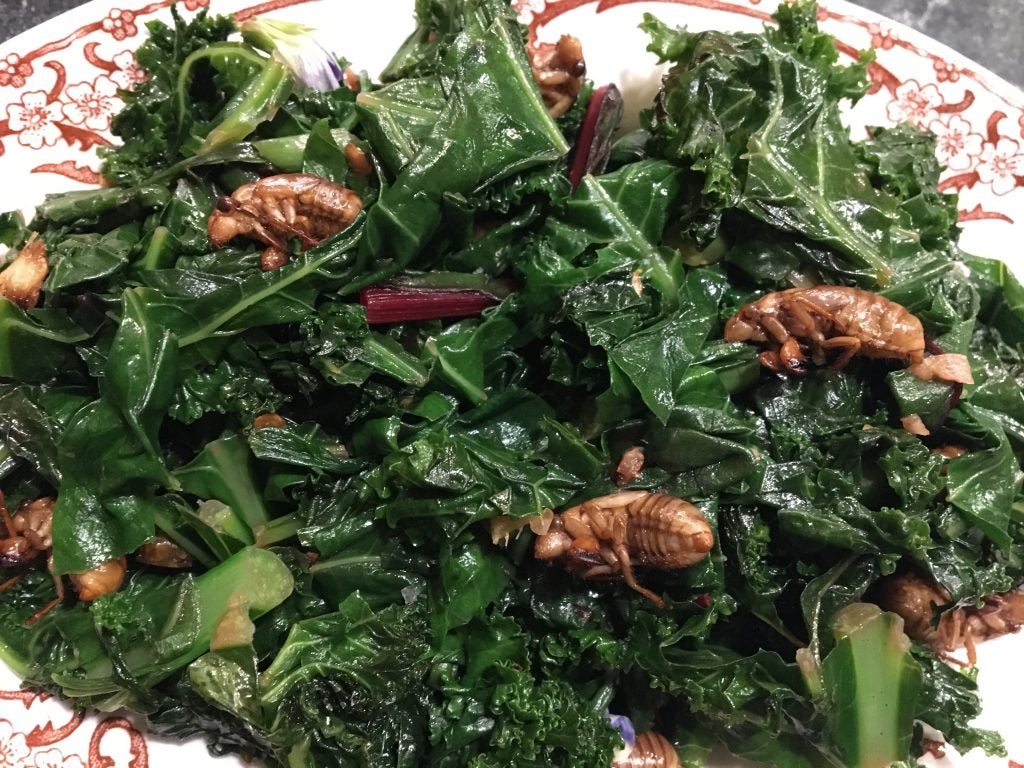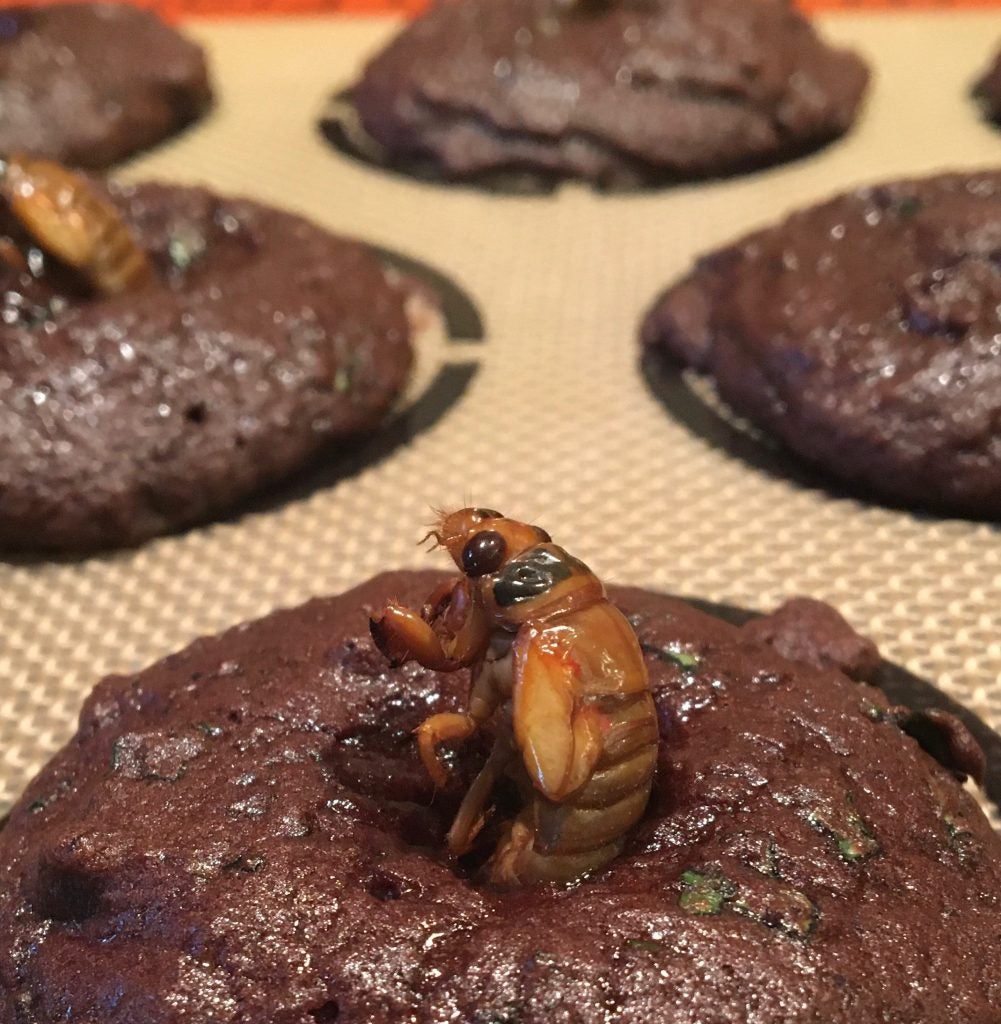The cicada broods have arrived.

This spring, trillions of cicadas belonging to Brood XIII and Brood XIX are crawling out from their underground burrows across the Midwest and South. While the cicadas won’t find their way to the Hilltop, the event will be similar to the emergence of Brood X in 2021, when trillions of cicadas appeared all over Washington, DC, and the surrounding region, not to be seen again until 2038.
However, this year’s simultaneous emergence of two neighboring cicada broods is a once-in-a-lifetime phenomenon — or, rather, once every 221 years.
These insects can be a loud annoyance or a buzzing winged terror for some people. But for Martha Weiss, professor in the College of Arts & Sciences, cicadas are her life’s work.
“The fact they have this extraordinary life cycle is part of what makes them interesting,” Weiss said. “I’ve lived in Washington for almost 30 years, and I’ve seen them twice here for six weeks at a time. They were here before [humans] ever got here, and they’ll be here after we’re gone.”
As a biologist and entomologist, Weiss studies how the emergence of cicadas affects local environments and food webs. She’s also an advocate for including these little insects as part of your diet.
In this Ask a Professor, watch Weiss give her pitch on why you should eat cicadas, then read on to discover what makes this year’s cicada emergence special and how cicadas can impact local ecologies.
View this post on Instagram
Ask a Professor: Martha Weiss on Cicada Life Cycles, Environmental Impacts and Favorite Cicada Dishes
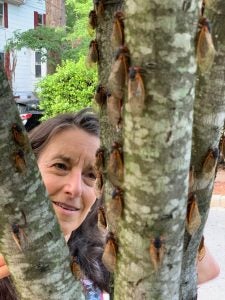 What makes periodical cicadas unique?
What makes periodical cicadas unique?
Periodical cicadas are amazing creatures that spend over 99% of their lives underground as immature insects; they come up for a few weeks once every either 13 or 17 years to molt into adults, mate, lay eggs and then die. And then the babies hatch out and head back underground, only to reappear in another 13 or 17 years.
Their synchronous mass emergence is also spectacular. Cicadas come up above ground simultaneously with billions of their buddies because they don’t have any chemical defenses. They don’t have any physical defenses. They’re not very fast. The way they avoid getting eaten is to have 1 billion friends around who are more likely to get eaten than they are.
What’s so exciting about this particular cicada emergence?
Every emergence is exciting – but this one is special because two adjacent broods of cicadas will be coming out at the same time. Across the eastern U.S. there are 15 broods, which are geographical groups of cicadas that each consist of up to four different species, and emerge on a very predictable schedule. It’s not unusual for different broods to come out at the same time, but it’s not all that common for adjacent broods to emerge together.
This year we’ll see 17-year Brood XIII to the north and 13-year Brood XIX to the south. They haven’t come up at the same time for 221 years – since 1803.
What do cicadas do while they’re underground?
We don’t know a lot about what happens underground because we can’t see it. Each cicada nymph is a couple of feet down there, in a little burrow in the soil, minding its own business and feeding on the fluid in tree roots. As far as we know, they don’t move around much, and they don’t communicate with one another. They stay there for 13 or 17 years. Then, a few weeks before they’re scheduled to come out, they unplug from their roots and dig a tunnel up to the surface.
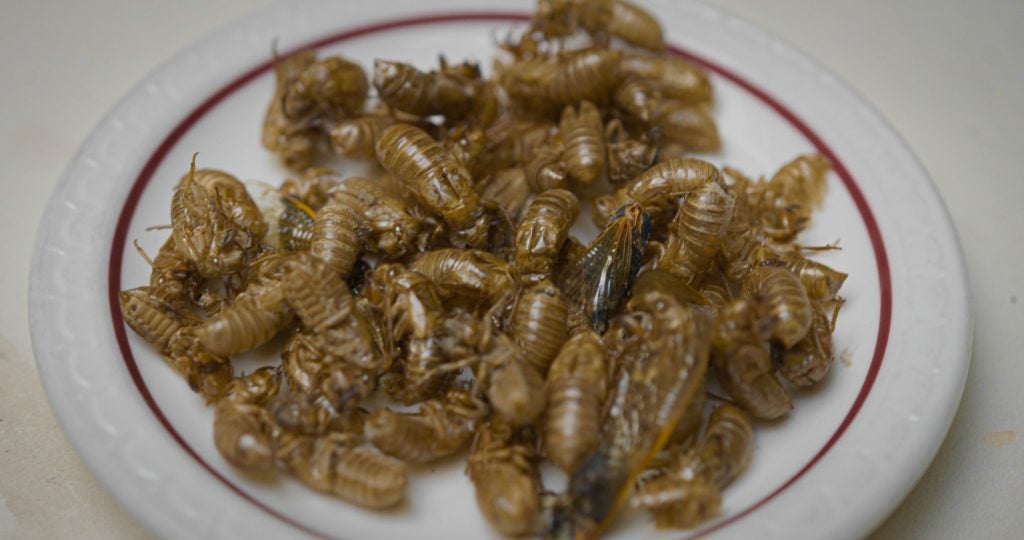
How do cicadas know when to emerge?
You can ask that question at two different levels. How do they know when 13 or 17 years have passed? And in the year that they’re coming out, how do they know when they should climb up to the surface because everybody comes out together?
The answer to the first question has to do with what they eat. Cicada mouths are like little hypodermic needles that they insert into the roots of a tree. They feed on xylem fluid, which is basically water that contains dilute nutrients. As the trees get their leaves in the spring, water evaporates from the leaves, and that pulls a column of water all the way up through the roots, trunk and branches of the tree. The cicadas seem to sense and somehow count the annual fluxes in this movement of xylem fluid through the roots. Then, in the year of the emergence, when the soil reaches a threshold temperature, that’s the cue to climb up and out and begin the transformation into adults. Within the first four or five days, probably 70% of them will come out, and the rest will drizzle out over a few more days.
How might climate change affect the life cycle of cicadas?
Cicadas come up from underground when the soil temperature a few inches below the surface reaches 64 degrees Fahrenheit. If our spring temperatures are warmer, then the cicadas could come out earlier in the year of emergence.
The timing of the broods could also change. The 13-year broods are all south of the 17-year broods [which are farther north and in colder climates.] With warmer temperatures, longer growing seasons for the trees would allow the cicadas to grow more quickly, so it’s possible that some of the 17-year broods could transform into 13-year broods,
What will scientists be looking out for in this year’s emergence?
Evolutionary biologists are going to be lined up at the zone of contact [between the two broods], in central Illinois. Because the 13-year broods have evolved from the 17-year broods, it will be fascinating to see what will happen when they meet one another again. Are they going to recognize each other? Will the 13-year species respond to the calls of their progenitors, or have the calls diverged? If individuals from the two broods do manage to mate, will their kids be nymphs for 13 years, 17 years, or will they split the difference?
What will you be studying with this year’s cicada emergence?
I’m going to be in Chicago for much of the summer, and we’re going to be studying how forest ants respond to both the first emergence, when the nymphs come up from underground, and the second emergence, when the eggs hatch and the babies drop to the ground.
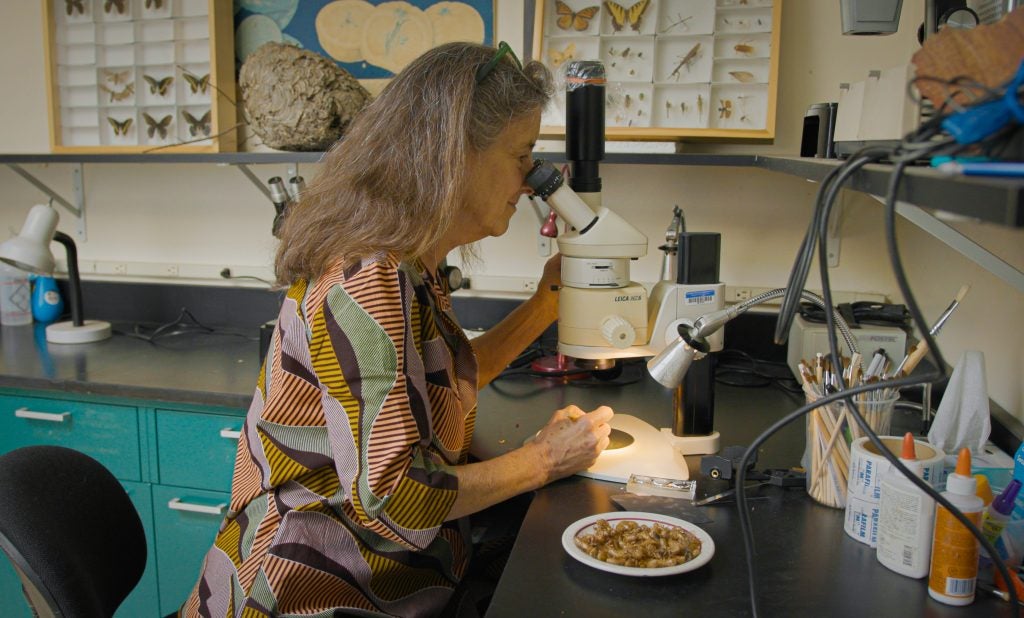
How do cicadas affect ants and local ecologies?
Ants are important and often overlooked citizens of the forest. We’re interested to see how the cicada emergence, which provides ready access to high-quality food, will change ants’ ordinary forest jobs.
As one example, many understory plants rely on ants for seed dispersal. These plants have a special little structure on the back of the seed called an elaiosome. It’s basically a little wart that mimics a dead insect. These structures entice ants to pick up the seeds and carry them away from the host plant, so they have a fighting chance to grow somewhere else. We think the ants are going to say, “I’m not going to look for a seed when I’m tripping over cicadas on my way to the elaiosomes – so forget the seeds.”
What’s the biggest misconception people have about cicadas?
Some people view cicadas as scary, dangerous aliens. It makes us [scientists] cringe when we see articles about invasions and that sort of thing, because these insects are entirely harmless. They’ve always been here, and we are privileged to live in an area where we get to see them come up every once in a while.
A periodical cicada emergence is a once-in-a-generation opportunity to help kids realize that insects can be cool, interesting and worth admiring, rather than scary, dangerous and creepy.
